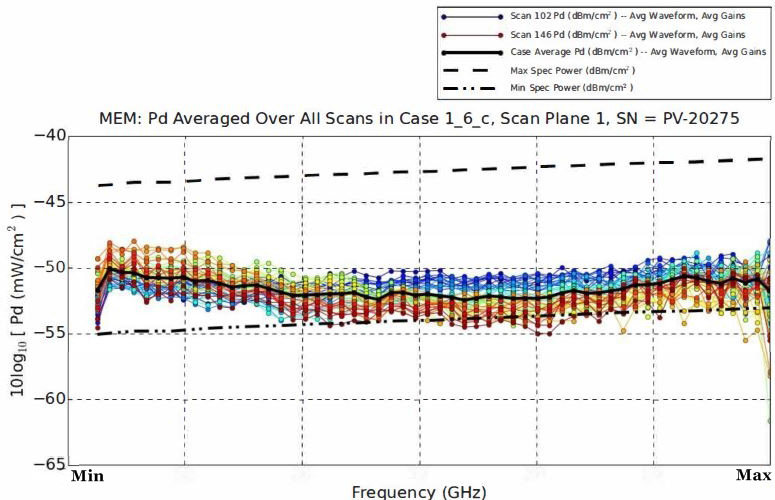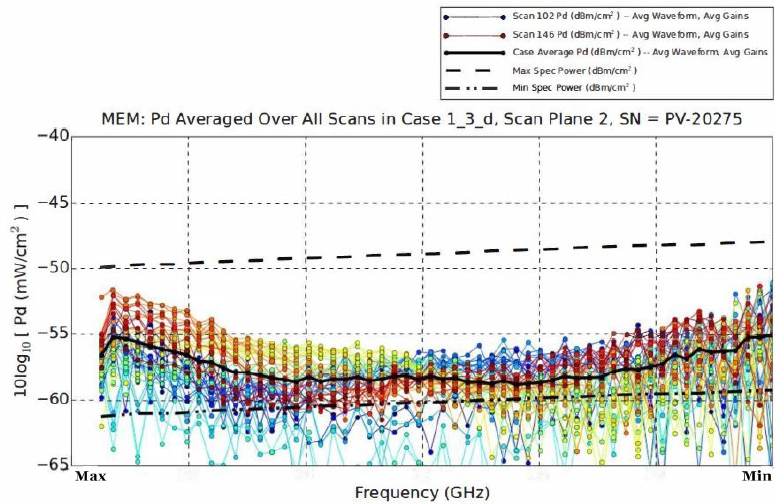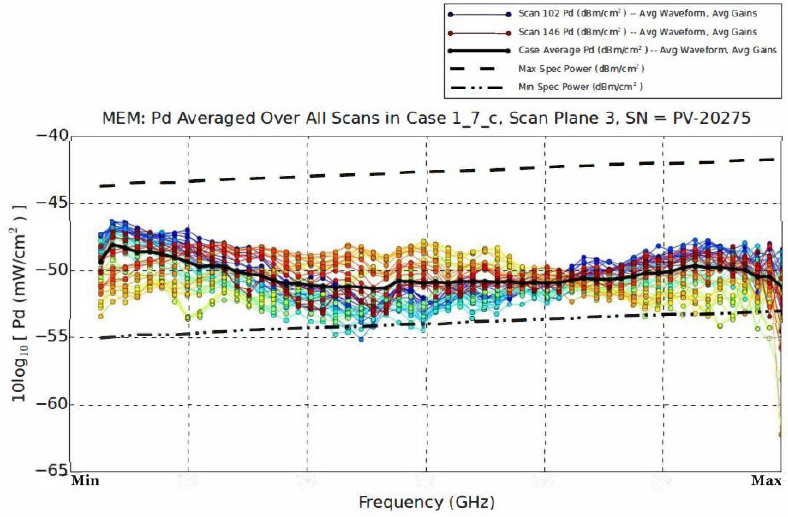F
Additional Airport Data
Additional airport data from the BerrieHill Research Corporation (BRC)/Applied Research Associates (ARA) team is provided in this appendix. For the Cincinnati/Northern Kentucky International Airport (CVG), McGhee Tyson Airport (TYS), and Memphis International Airport (MEM) measurements described below, only the single Keysight 8990B power meter port was used. In addition, the 3 dB Power Coupler and the additional radio frequency (RF) cable were removed to further minimize losses and improve system sensitivity by approximately 6 dB for the CVG, MEM, and TYS airport measurements in comparison to the Dayton International Airport (DAY) measurement, which had less system sensitivity and lower time-domain sampling.
CINCINNATI (CVG) AIRPORT DATA
Figures F.1 to F.3 are the same three internal Scan Planes (1, 2, and 3) for the CVG airport measurements. The theoretical curves are adjusted for the actual field distances measured.
At CVG airport, there was another attempt to measure the power density in the ProVision exit door adjacent to the Transportation Security Administration (TSA) operator’s position (Scan Plane 4). As discussed earlier, this was unsuccessful at the DAY airport because the fixed center position of the ProVision scanner did not radiate sufficient energy into Scan Plane 4 to be detected by the team’s equipment. At CVG airport, the ProVision scanner was operated in the normal scanning mode, rather than the fixed service/engineering mode, to attempt to capture the transient
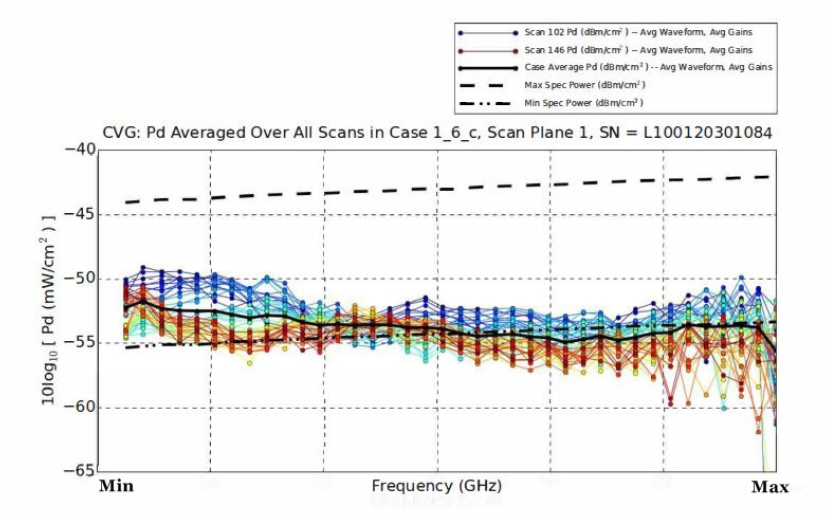
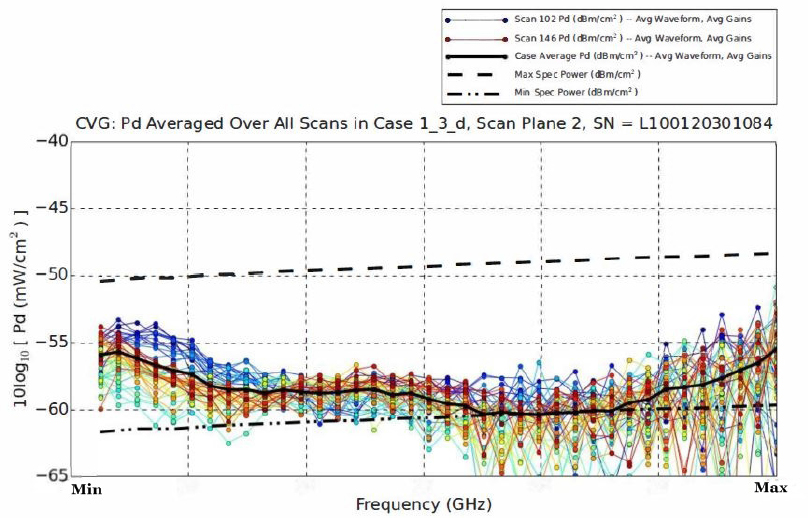
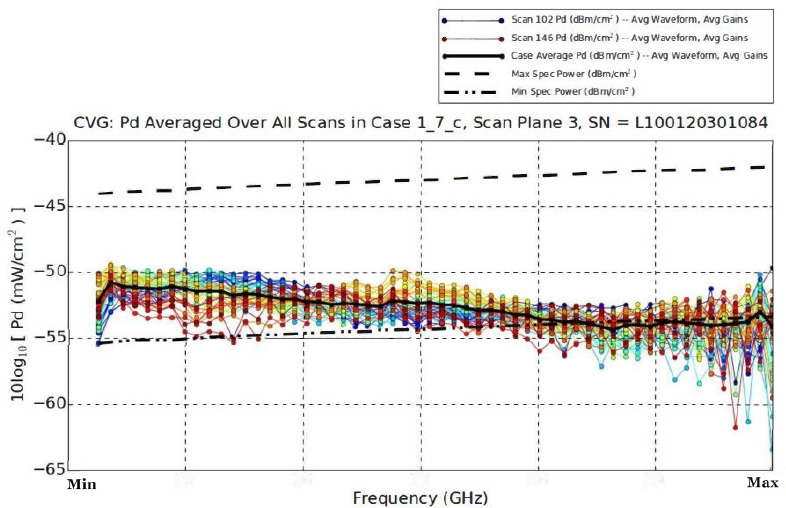
response at Scan Plane 4 with the scanner bar in motion. The split second after a right-to-left sweep is initiated (or when a left-to-right sweep ends), the scanner is in the position shown in Figure F.4. To capture the reference pulse for triggering, the reference antenna was placed on a tripod and faced the opposite rear array in order to capture the transient response. The data acquired are excellent and are displayed in Figure F.5. Essentially, the plot in Figure F.5 is the power level at the exit door assuming the scanner mast was fixed in the position shown in Figure F.4. The actual level of exposure on a single sweep if the TSA operator stood right in the exit door is at least 10 dB weaker than the energy the passenger is exposed to. The exit door is only illuminated for roughly 30 percent of the mechanical sweep time, 15 percent from the front array illumination, and 15 percent from the back array illumination. If one factors in the 30 percent power duty cycle losses of the mechanical sweep, the expected exit door power levels of Figure F.5 should be reduced on average by an additional 10*log(0.15) = −8.2 dB to account for the sweep duty cycle. This means that the average power density at the entrance of the portal is close to 16 million times below the acceptable limit for a continuous signal.
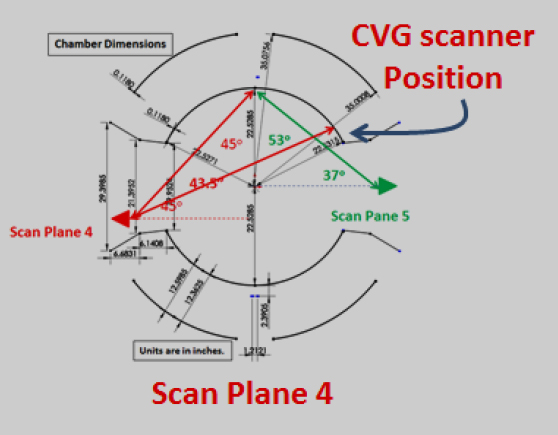
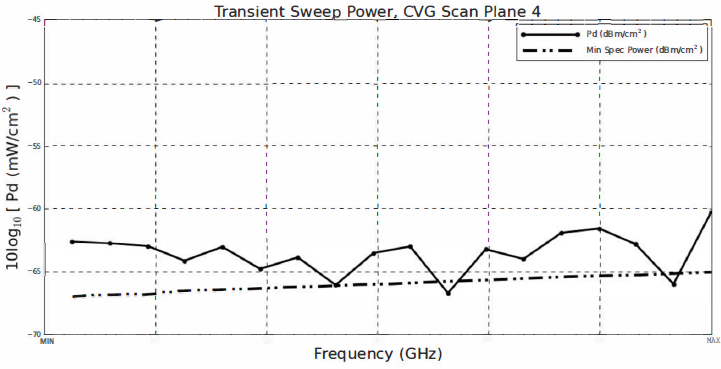
TYSON (TYS) AIRPORT DATA
This section presents the three scan planes for TYS airport. This was also a ProVision ATD machine. Figures F.6 to F.8 are the composite data similar to what has been presented here for CVG and DAY airports and are presented here without further comment.
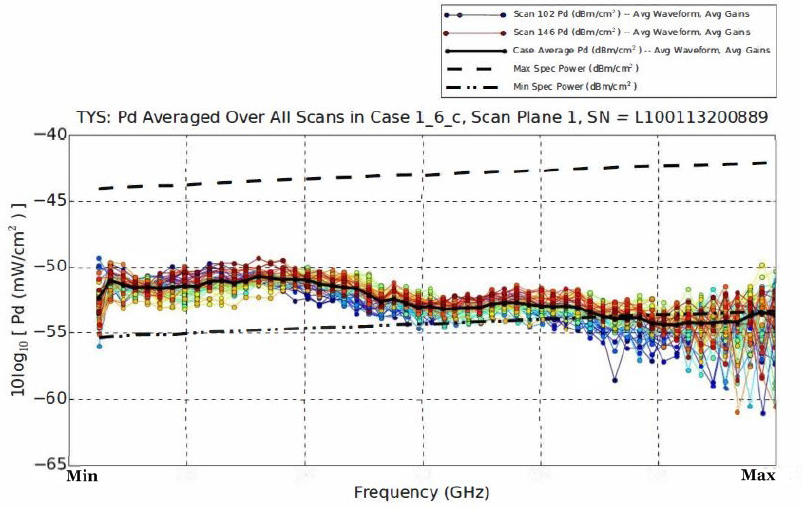
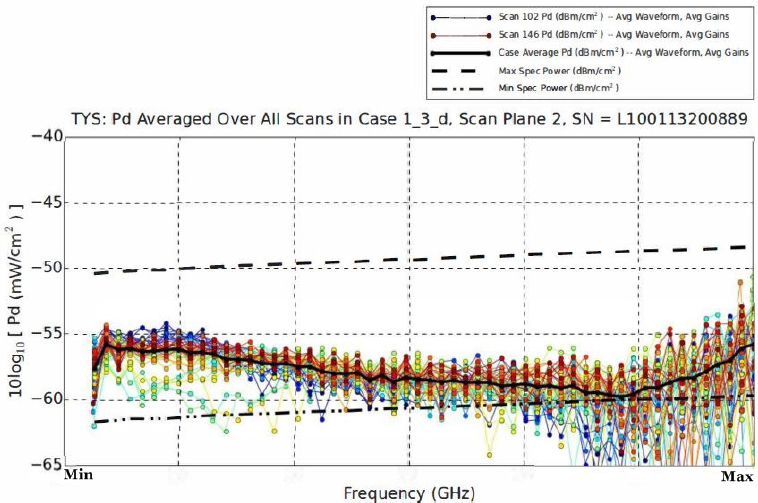
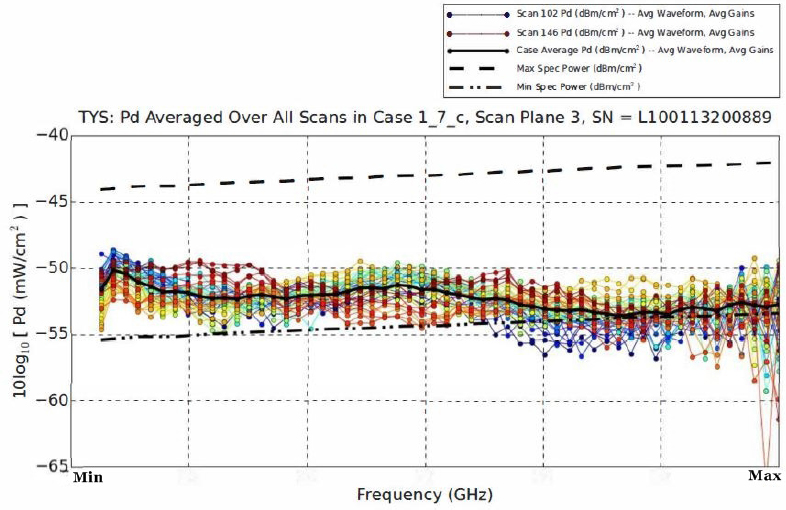
MEMPHIS (MEM) AIRPORT DATA
This section presents the MEM airport data. This was the sole ProVision 2 model machine measured in this effort. As with the other three airports, these are presented without additional comments, other than to remind the reader that beyond Scan Plane 4, further measurements were not performed at TYS and MEM airports, because they would not give any additional information of value. Figures F.9 to F.11 show the MEM airport data for Scan Planes 1, 2, and 3 respectively. The RF subsystem for ProVision ATD and ProVision 2 are identical, and the measurements at MEM airport are consistent with the other three airports.
